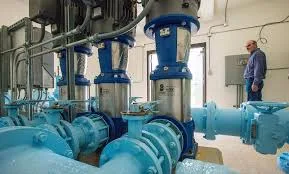Definition: The Earthquake Response Spectrum (ERS) is a graphical representation of how a structure responds to earthquake ground motion at varying frequencies. It's an essential tool in earthquake engineering for assessing the potential seismic performance of buildings and other structures.
Earthquake Response Spectrum Calculator
Definition Continue: Here's a gentle breakdown of the key components and equations involved:
1.Acceleration Response Spectrum (ARS):
The ARS represents the maximum accelerations experienced by a structure at different frequencies.
Mathematically, it's defined as 𝑆𝑎(𝜔)=𝑆𝑎,𝑚𝑎𝑥×𝐷(𝜔), where: 𝑆𝑎(𝜔) is the spectral acceleration at a particular frequency 𝜔
Sa,max is the maximum spectral acceleration corresponding to the given ground motion.
D(ω) is the normalized response spectrum shape function, which characterizes the structure's response characteristics.
2.Velocity Response Spectrum (VRS): The VRS represents the maximum velocities experienced by a structure at different frequencies.
It's obtained by integrating the ARS over the frequency range of interest.
Mathematically, 𝑆𝑣(𝜔)=∫(0,𝜔)𝑆𝑎(𝜔)𝑑𝜔
3.Displacement Response Spectrum (DRS):
The DRS represents the maximum displacements experienced by a structure at different frequencies.
It's obtained by integrating the VRS over the frequency range of interest.
Mathematically, 𝑆𝑑(𝜔)=∫(0,𝜔)𝑆𝑣(𝜔)𝑑𝜔
4.Normalized Response Spectrum Shape Function (Damping Ratio Consideration):
The shape of the response spectrum is influenced by the damping ratio (ξ) of the structure.
For a single-degree-of-freedom (SDOF) system, the normalized shape function 𝐷(𝜔)
D(ω) can be expressed as:𝐷(𝜔)=(2𝜉𝜁/π). (𝜔/𝜔n**2−𝜔**2)
where:
ω is the angular frequency (in rad/s).
ωn is the natural frequency of the structure (in rad/s).
ξ is the damping ratio.
5.Modal Response Spectrum:
For multi-degree-of-freedom (MDOF) systems, the response spectrum is computed considering the contributions from each mode shape of the structure.By utilizing these equations and concepts, engineers can assess how structures might respond to seismic events across different frequencies. This helps in designing buildings and infrastructure that can withstand earthquakes effectively.
Using an Earthquake Response Spectrum Calculator can offer several benefits for various stakeholders involved in the design, construction, and assessment of structures in seismic-prone regions. Here's how each group can benefit:
Structural Engineers and Designers:
Accurate Seismic Design: The calculator provides engineers with a clear understanding of the potential ground motion at a specific location, allowing them to design structures that can withstand the expected seismic forces. By inputting parameters such as site location, soil type, and building characteristics, engineers can obtain accurate response spectra tailored to the project requirements.
Optimized Structural Design: Engineers can use the response spectrum analysis to optimize the design of structures, ensuring that materials are used efficiently without overdesigning. This can lead to cost savings while still maintaining structural integrity and safety.
Evaluation of Structural Performance: Engineers can use response spectra to evaluate the performance of existing structures under seismic loading conditions. By comparing the response spectra of the structure with the design spectrum, engineers can identify potential weaknesses and retrofit measures needed to enhance structural resilience.
Architects and Building Owners:
Enhanced Safety and Resilience: By incorporating seismic design considerations based on response spectra analysis, architects and building owners can ensure that structures are built to withstand earthquakes, thereby enhancing the safety and resilience of occupants and assets.
Compliance with Building Codes: Many building codes and regulations require structures in seismic zones to undergo seismic design analysis. Utilizing response spectra calculations helps architects and building owners demonstrate compliance with these codes and regulations, avoiding potential legal and financial liabilities.
Government and Regulatory Bodies:
Risk Assessment and Mitigation: Response spectrum analysis provides valuable insights into the seismic hazard and risk profile of a region. Government agencies and regulatory bodies can use this information to assess the vulnerability of existing infrastructure, prioritize mitigation measures, and develop effective disaster management strategies.
Development of Building Codes: Response spectra analysis contributes to the development and revision of building codes and standards related to seismic design. By providing empirical data on ground motion characteristics, response spectra calculations help inform the establishment of appropriate design criteria and seismic provisions in building codes.
Insurance Companies and Risk Assessors:
Risk Management and Underwriting: Insurance companies can utilize response spectra analysis to assess the seismic risk associated with insuring properties in earthquake-prone regions. By evaluating the seismic performance of structures based on response spectra, insurers can determine appropriate premiums and coverage levels to mitigate financial risks.
Loss Estimation and Claims Processing: In the event of an earthquake, response spectra analysis can be used to estimate potential losses and damages to insured properties. This information facilitates more accurate claims processing and enables insurance companies to respond effectively to policyholders' needs.
In conclusion, the Earthquake Response Spectrum Calculator serves as a valuable tool for a wide range of stakeholders involved in the design, construction, assessment, and management of structures in seismic zones. By providing insights into ground motion characteristics and structural response, it enables informed decision-making, enhances safety and resilience, facilitates compliance with regulations, and supports risk management efforts.How to Earn By Calculating Eargquake Response Spectrum click & search any post















